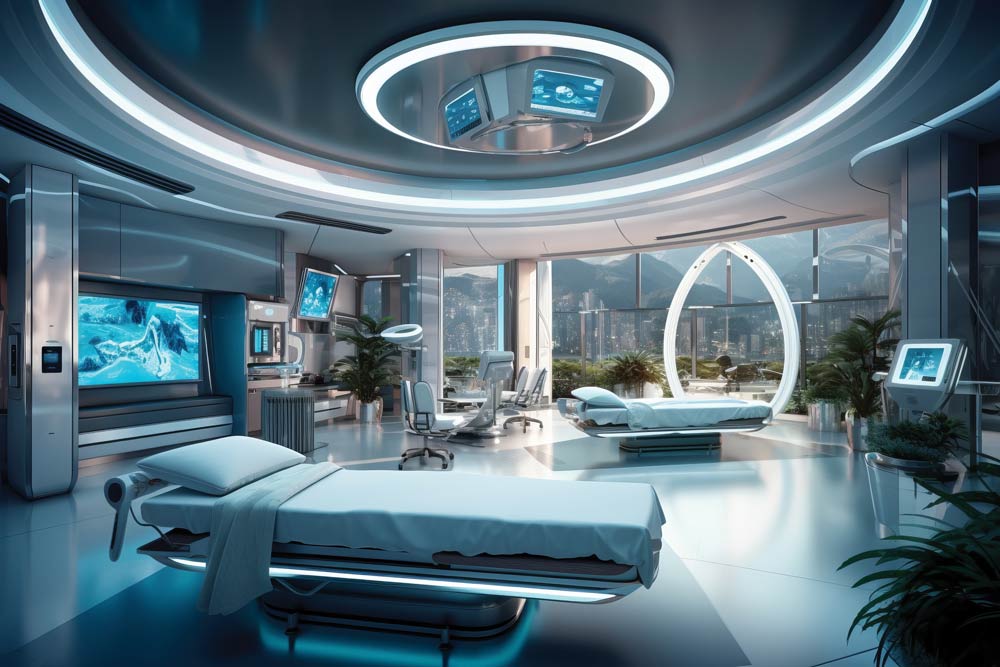The Impact of the Hotel Industry on Medical Tourism

Medical or wellness tourism has been around for centuries. Still, its growth as a viable and mature industry is accelerating like the expansion the hotel industry experienced from the 1950s to the 1980s.
The hotel systems spread in the 1950s and 1960s, reaching maturity by the late 1970s. It evolved into an efficient industry with varied management, marketing, financing, accounting, measurement, standards, and discipline in operations (Steve Rushmore). This paper discusses the hotel industry’s pivotal role in complementing medical tourism’s positive developments. In the United States, national and regional professional hotel and lodging associations emerged in the early 20th century, primarily to protect the lodging industry from fraud, and paralleled growth in the 1970s to offer a broad range of promotional and educational programs and legislative support (AH&LA). Today, numerous medical tourism companies and health clusters have been established worldwide to assist in the industry’s development and standardization. The American Medical Association takes the initiative, collaborating with universities and early competitors to provide education and certifications, promote best practices, and lead the evolution.
How does the future look?
We anticipate that medical tourism will mature faster than the three decades that marked the rise of the hotel industry, primarily due to the current advancements in operations, system design, branding strategies, technology, and so forth. However, the maturation of the medical/wellness tourism industry won’t happen on its merits alone, as this industry heavily relies on many players and, in some cases, on the entire community. For this reason alone, medical tourism will face numerous challenges, more so than specific tourism sectors such as timeshares and amusement parks.

Why is the hotel stay integral to medical tourism and the wellness industry?
The hotel/lodging industry partnership plays a small but significant part in developing various tourism sectors. An example is the timeshare industry in the United States, which started almost 30 years ago (Randall S., Upchurch & Kurt Gruber) and only truly flourished when major hotel chains like Marriott and Hilton entered into partnerships with companies in this sector.
The industry’s development reached its current stature thanks to its expertise in brand development, customer loyalty, and crucial resources, including real estate brokers, top investors, and innovative mixed ventures.
Let’s start with the Mayo Clinic’s community approach to the comprehensive patient experience and healthcare delivery. Mayo’s primary goal is: to understand human needs and design services, products, and business models to meet those needs. (http://www.mayo.edu/center-for-innovation/what-we-do/mission-goals-and-approach).
Patients and their families traveling for healthcare have many needs. Some are tangible, like transportation, accommodation, food services, shopping, and proficient touristic activities. The intangibles, the cornerstone of the hotel industry culture, encompass the pre-departure, encounter, and post-departure experiences.
A balanced medical/wellness tourism destination should address nearly all tangible and intangible matters, which goes beyond the scope of this paper. Therefore, we explore how the lodging industry can position itself to make its services available to medical/wellness tourists by:
1. Providing accommodation places,
2. Suitable and effective business models,
3. Innovative design, comfort, and services.
Supply: Hospitals and healthcare facilities need each other more than ever before. Cost pressures force hospitals to discharge patients on time to nearby hotels or homes; the demand for hospitality services within hospitals compels healthcare facilities to act like hotels, and hotel companies see opportunities in building hotels near healthcare facilities. The interaction between this attraction makes the perfect marriage. Improved occupancy and financing needs enhance the appetite of the hotel industry to build hotels near hospitals:
Occupancy: A study by Bruce Serlen (Hotel Management) mentioned that hotels near healthcare facilities achieved a higher occupancy rate during the 2007 recession. Many sources, such as HVS, amplified this statement. As a result, developers are more interested in building hotels near hospitals to create a recession-proof facility. (Bruce Serlen, Hotel Business, 02/07/09, Volume 18, Number 3)
Financing: In a flat economy, both banks and hospitals are appropriately interested in financing such projects. Mark Laport, the CEO of Concord Hospitality in Raleigh, North Carolina, stated: “With nearly a halt in new hotel development in the U.S., one of the few areas where new property construction continues is the hospital-adjacent hotel market. Developers of these hotels can pitch financiers on their built-in customer base, and in many cases, negotiate side deals with housing-hungry hospitals that might purchase assets like free parking spaces or land below market price.”
http://www.travelweekly.com/Travel-News/Hotel-News/Hospital-adjacent-hotels-get-built-amid-development-standstill/
Appropriate and Efficient Business Models: Accommodation operators and healthcare facilities can integrate in at least three ways.
Firstly, the most common model in the United States is where hotels and hospitals arrange Memorandums of Understanding (MoUs) to cooperate, sometimes by offering discounted rates, transportation, concierge services, etc.
Secondly, hotels and hospitals exist together in the same building. Either the hospital dedicates a few stories for patient/family rooms (e.g., University of Michigan Med Inn, Bumrungrad International Hospital in Thailand), or a large hotel dedicates a floor or two for a health/medical facility (e.g., Shilla Hotel, Seoul, South Korea).
Thirdly, the hotel and the hospital build a mixed-use project under the same ownership. These facilities are strategically located to meet the needs of the patients in the hotel, their families, and transient guests (e.g., Grand Resort Bad Ragaz, Switzerland).
These models have already been established worldwide, and we still need more research and analysis to verify the pros and cons each model offers, the specific needs of different patients and their families, and the economic feasibility of each model.
Currently, we wait and see which model emerges and best aligns with the advantages of each destination and its customer needs.
Innovative Design, Amenities, and Services: While developers may rush to build hospitals adjacent to hotels, we have yet to design an ideal brand for travelers for therapeutic/medical tourism.
Several challenging issues still require further research. Most importantly, building modifications, facility adjustments, and service modifications.

Building Modifications: The accommodation sector still needs to develop an efficient room design that fully caters to the needs of both patients and leisure/business travelers. A hospital-like hotel room is less appealing to business or leisure clients.
Still, it should fully accommodate ADA requirements by removing architectural barriers, such as accessibility to all amenities, including the pool, sauna, etc., and providing assistive aids and innovative wired and wireless communications. Such an effective design remains to be seen.
Additionally, the property’s facility entrances and guest movement should be appropriately and conveniently designed for all targeted customer needs.
Facility Modifications: What are the
most desired amenities for patients? There’s no valid data considering the needs of all guest types alongside customer preferences.
Logically, the following amenities seem smart, but are they? Adjustable beds, nurse call systems, Wi-Fi, bed controls, individual TVs, hot baths, individually controlled air, bathroom amenities suitable for recovering patients and family needs, such as microwaves, refrigerators, washing machines, etc.
Service Modifications: This is one of the most challenging factors the hotel sector must face when partnering with hospitals or health centers. Hotels are one of the main touchpoints in the patient encounter stage. To provide seamless services to all guest types, especially traveling patients, hotels need to consider the following:
Efficient gatekeepers, translators, first-aid training, prescription delivery, coordinators, 24-hour room service, shopping services, group transport services, and all-inclusive pricing.
Nursing staff and nutrition specialists: All of this requires significant investments in employee training and recruitment activities. Most hotel employees are attracted to this industry without a primary background in dealing with patient needs. Research is needed to explore the cost-effectiveness of these training efforts. Additionally, we must explore what kind of employees will succeed in this sector. What are the characteristics required for performance modeling? What are the necessary credentials? Lastly, what services should they possess?In conclusion, although the industry, as a specific segment, seems more applicable than ever, there are numerous upcoming challenges, including community involvement and partnerships, significant funding requirements, management systems, distribution channels, legal issues, marketing and branding, standardization, and metrics/benchmarking. All these challenges offer numerous opportunities for all stakeholders, which we hope to witness as other industries have accomplished before us.
















